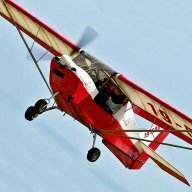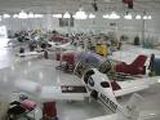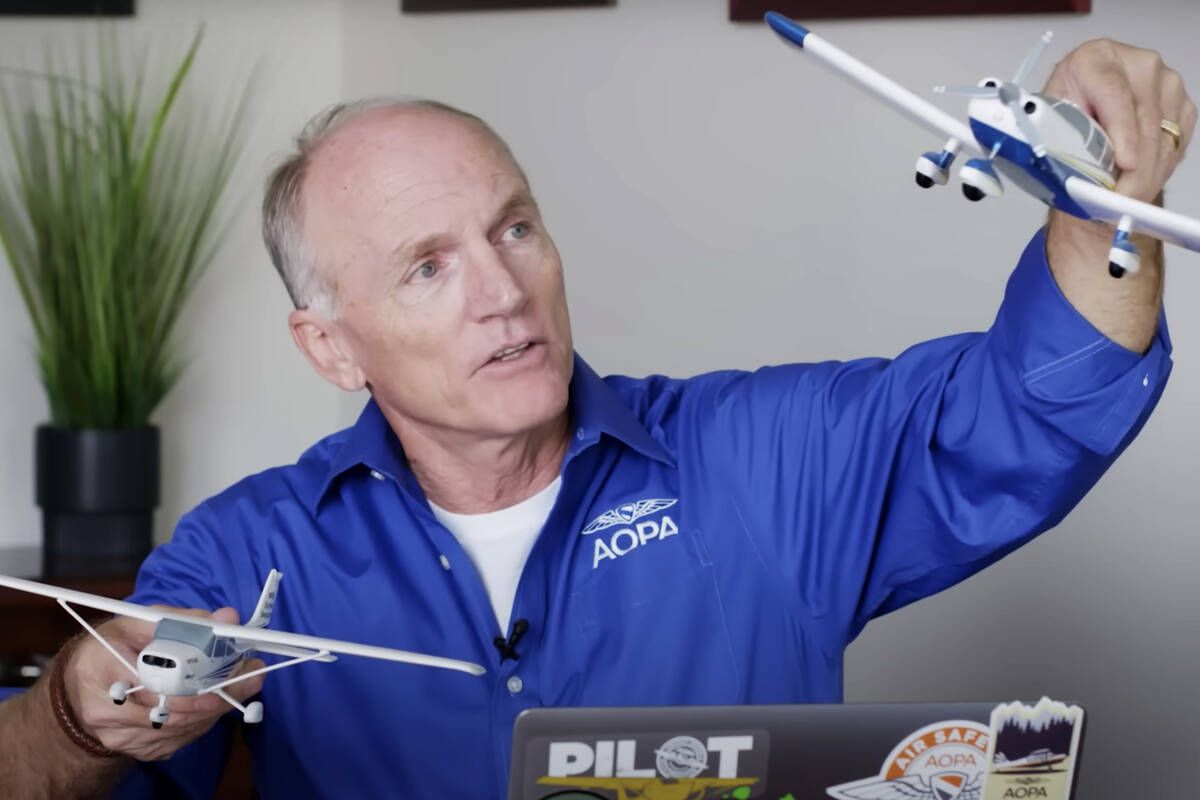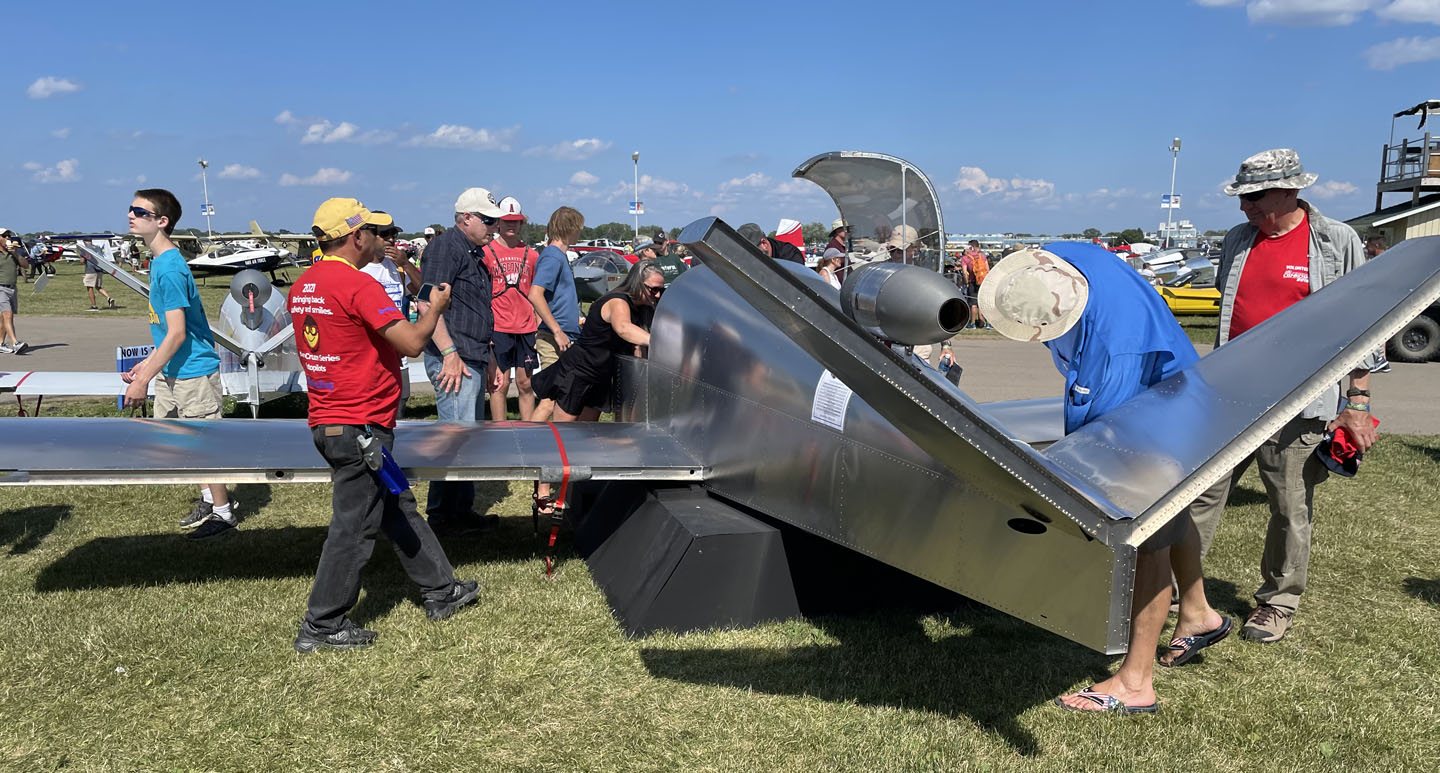-
Posts
2,751 -
Joined
-
Last visited
-
Days Won
58
Content Type
Profiles
Forums
Gallery
Downloads
Blogs
Events
Store
Aircraft
Resources
Tutorials
Articles
Classifieds
Movies
Books
Community Map
Quizzes
Posts posted by Garfly
-
-
Yes, agreed. I think the revelation of the video story was that whereas SE2 indeed uses baro (Pressure Altitude) for its traffic function ('everyone on the same page') the position info that it's sending your EFB (assuming you enable that function) is all GPS derived - including altitude. It seems that the guy involved was expecting higher quality baro info being sent to his SkyDemon (although that doesn't take into account the difference between Pressure Alt and AMSL)
Anyway, the video makes clear that he accepted full responsibility; that he should have been referencing his plan and his altimeter. The moral is the obvious one; we should be taking advantage of the safety features of new tech but not be lulled into overconfidence in what it tells us.
I was curious about OzRwys position on this issue (pilots developing undue confidence in GPS derived V-Nav guidance) and whether it was feasible to use the baro capabilities of portable devices (QNH adjusted on-the-fly) as opposed to relying on GPS data. So I sent off this enquiry:
"Dear OzRwys support,
I have just watched this interesting video from the UK
https://www.youtube.com/watch?v=sOT4_cmQLKw
which tells the story of a chap who clipped controlled airspace around London. It seems he did it partly because of over confidence in the altitude information that his SkyEcho device was feeding his SkyDemon app - in particular its V-Nav graphic display.
Apparently he was assuming that because the SkyEcho uses a proper barometric pressure altitude device for vertical traffic separation that reasonably accurate vertical info was being fed to the SkyDemon. But as the video explains, it ain’t so; it’s only GPS altitude that’s being sent and that, of course, can be pretty unreliable.
I suppose it’d the same with OzRwys, right? And, presumably, when the app is only using the internal GPS it’d be the same - that no baro info is involved. Anyway, it’s a good reminder that with any VNav advice from carry on gear, we have to remember that when it’s GPS altitude that we’re working off, we need to regularly cross-check it with our (QNH adjusted) altimeter.
I guess my question would be: Is there any way for OzRwys to use the barometric data available in portable devices (and adjust it for QNH) instead of GPS derived data for any of the vertical gudance displays?
Thanks for any insights,"
-
 1
1
-
-
-
Well, Rich has tried to give us SOME idea of what it knows - and what it doesn't (yet).
Meanwhile, from today's NYT:
 At UK Summit, Global Leaders Warn AI Could Cause ‘Catastrophic’ Harm - The New York Times
WWW.NYTIMES.COM
At UK Summit, Global Leaders Warn AI Could Cause ‘Catastrophic’ Harm - The New York Times
WWW.NYTIMES.COM
At a U.K. summit, 28 governments, including China and the U.S., signed a declaration agreeing to cooperate on evaluating the risks of artificial intelligence. -
https://www.communityaviation.com/hubfs/Nine Principles - Rich Stowell and ChatGPT - 27Sep2023-1.pdf
And starts a new blog (which, he reckons,
was written by a human ;- )
 Community Aviation
WWW.COMMUNITYAVIATION.COM
Community Aviation
WWW.COMMUNITYAVIATION.COM
We're building a network of experts in every field of aviation that you can access for knowledge and hands-on training.Rich Stowell. Rich took his first flying lesson in 1982 and began his career as a full-time flight instructor specializing in spin, emergency maneuver, and aerobatic training in 1987. He is a recognized subject matter expert in loss of control in light airplanes, the 2014 National FAA Safety Team Rep of the Year, and the 2006 National Flight Instructor of the Year. A 20-year Master Instructor, Rich is a Charter and Life Member of the Society of Aviation and Flight Educators, and a 35-year member of AOPA, EAA, and IAC. He has logged 10,200 hours of flight time with 9,100 hours of flight instruction given, 34,700 spins, and 25,700 landings.
-
 1
1
-
-
 Deconstructing The Cirrus Hate - AVweb
WWW.AVWEB.COM
Deconstructing The Cirrus Hate - AVweb
WWW.AVWEB.COM
With anti-Chinese sentiment at an all time high, Cirrus takes it on the chin for being owned by the Chinese government. Should it?-
 1
1
-
 1
1
-
-
20 hours ago, facthunter said:
Hours and lots of experience help, but do not guarantee the sure outcome in a risky situation we might expect and hope for. Human Factors delve into this and that's often where the answer lies.
And this is Blancolirio's account of yet another professional going down in a GA single.
Juan opines that an important safety device we'd do well not to forget is the common credit card.
-
 4
4
-
-
3 hours ago, facthunter said:
Reaching your destination (the runway) is important too.
Yes, according to Juan Browne, it was probably not the turn, per se, that caught them out but coming up short on the glide, which, in this case, meant crashing into near vertical terrain just before the runway; apparently, a kind of plateau, whereas a normal airport layout might have had this episode end with nothing more than a bit of an undershoot in the grass.
-
 1
1
-
 1
1
-
-
-
 2
2
-
 1
1
-
-
YPFT closure is mentioned in "Public Notes" on its info page in OzRwys.
-
New OzRwys instructional vid:
-
 1
1
-
-
-
-
-
 Two killed in Lake Placid airplane crash identified | News, Sports, Jobs - Lake Placid News
WWW.LAKEPLACIDNEWS.COM
Two killed in Lake Placid airplane crash identified | News, Sports, Jobs - Lake Placid News
WWW.LAKEPLACIDNEWS.COM
LAKE PLACID — The two people killed in an airplane crash at the Lake Placid Airport on Sunday have been identified as Russ Francis, a former NFL tight end who Air Safety Institute's Richard McSpadden Dies In Crash - AVweb
WWW.AVWEB.COM
Air Safety Institute's Richard McSpadden Dies In Crash - AVweb
WWW.AVWEB.COM
Richard McSpadden, the senior vice president of the AOPA Air Safety Institute died, along with one other person, in the crash of a Cessna 177RG near Lake Placid Airport in upstate New York Sunday... -
More to the point: whatareyou
-
More flingwing follies:
-
 3
3
-
-
 A MOSAIC Study Guide - FLYING Magazine
WWW.FLYINGMAG.COM
A MOSAIC Study Guide - FLYING Magazine
WWW.FLYINGMAG.COM
FAA proposed regulation has powerfully captured the attention of many pilots. Pilots have tons of questions. -
-
-
According to this report the Pawnee was going around as the Jabiru was taking off on the crossing runway.
 One plane in fatal aerial collision north of Brisbane had just aborted a landing attempt, ATSB reveals - ABC News
WWW.ABC.NET.AU
One plane in fatal aerial collision north of Brisbane had just aborted a landing attempt, ATSB reveals - ABC News
WWW.ABC.NET.AU
One pilot survived the mid-air collision near Caboolture Airfield, which killed David and Jan Maddern on Friday morning.-
 1
1
-
-
-
Yep. It's a homebuilt. Surely not pressurised. O2 units available if needed.
As mentioned above, it cruises at around 200 Kt.
Its engine weighs 20 kilos; smaller than an airliner's APU.
Some interesting facts, for anyone interested, in this "Experimenter" article (from some years back, about a prototype of the single seater).
https://www.sonexaircraft.com/wp-content/uploads/2018/01/EAASA_SubSonex_Sept_2016.pdf
EXCERPTS:
"BOB CARLTON COMES SCREAMING down the air show line at nearly 300 mph. The high pitch of the tiny PBS TJ100 jet engine, combined with the vivid canary yellow paint scheme, make the entrance of the JSX-2 SubSonex very hard to ignore ... The JSX-2 could easily be the everyman’s jet, and I was lucky enough to learn why in the most fun way possible—through firsthand experience studying and flying it.
SPIRITED PERFORMANCE The density altitude is a whopping 7,000 feet at the runway. While the takeoff roll of the SubSonex is correspondingly long, that is immediately forgotten as the tiny landing gear break free from the runway surface. Even at this altitude, the JSX-2’s performance is so far removed from most aircraft in this weight class that I can’t help but smile. I quickly get back to business and retract the gear as the airspeed rapidly accelerates toward the maximum gear speed of 125 mph. The gear stows within seconds, and 500 feet AGL passes as I reduce the thrust to climb power (98 percent) and arm the engine’s automatic protection computer (more on that later). Climbing at 150 to 160 indicated, I reach maneuvering altitude after only three climbing legs around the airport’s perimeter. The altimeter now reads 9,500 feet MSL (density altitude of around 10,500 feet), but I’m only 3,000 or so feet above New Mexico’s high desert terrain. As I level off, I wonder to myself what the SubSonex’s performance must be like when operating out of Sonex’s home airport of Oshkosh, Wisconsin, in the dead of winter. I’m sure what I just experienced would seem positively anemic in comparison.
MICROSTEPS TO MICROJETS Tiny jets have been around for decades. In fact, a fascinating array of them have popped up at AirVenture over the years. However, until recently, flying examples have been essentially limited to novelty air show acts and one-off aircraft originally designed with piston powerplants. The jet engines they used were mostly converted auxiliary power units (APUs) or upscaled RC model aircraft engines. While the former suffered from poor power-to-weight ratios and high fuel consumption, the latter lacked reliability and operational convenience. Additionally, with airframes initially designed without consideration of turbine power, the systems, aerodynamics, and performance limitations can easily negate any advantages that a jet engine (of any variety) might offer. Thus, the microjet that offered any real level of practicality remained elusive. Then, in 2008, a Czech company with decades of experience building military-grade APUs introduced something different, something game-changing. The PBS TJ100 turbojet engine was a modern, clean-sheet design with exceptional thrust-to-weight ratio and fuel economy. Unlike earlier microjet engines, it incorporated computerized digital control, an integrated starter/ generator, recirculating lubrication, and spark ignition. All of which contributed to ease of operation, along with reliable and predictable performance. People noticed. Soon, the TJ100 became very desirable for both small manned aircraft and drone applications. Previously built microjets that struggled with engine reliability for years quietly began to convert to PBS engines. While other applications that had been waiting for just such an engine began to move beyond imaginations and into reality
Sonex Aircraft founder and legendary sport plane designer John Monnett set about designing a completely new Sonex. His design would revolve around PBS turbojet power and be optimized to take full advantage of it."
-
 2
2
-
-
1 hour ago, ClintonB said:
Does anyone know if the 2 seat will get a bigger jet or 2 of them for the increase in weight of load, and possibly more fuel?
could you build a longer wing and get extra lift Nev is talking about for load and higher flying.
The engine is the same apparently. The wing area is about 47% larger.
Lots of info here:
 SubSonex JSX-2T Update: Successful AirVenture Debut and a Design Tweak – Reserve Your Two-Place Jet Kit Today! – Sonex Aircraft
WWW.SONEXAIRCRAFT.COM
SubSonex JSX-2T Update: Successful AirVenture Debut and a Design Tweak – Reserve Your Two-Place Jet Kit Today! – Sonex Aircraft
WWW.SONEXAIRCRAFT.COM
The long-anticipated Two-Seat SubSonex JSX-2T was unveiled at a record-breaking EAA AirVenture Oshkosh 2022, providing the first opportunity for the public to see the new...I put the specs alongside each other here to compare.
[Click the 'thumbnail' to see it properly.]
-
 1
1
-
 2
2
-
-
Absolutely, it's a poor man's Vision Jet. ;- )
-
 2
2
-














UK PPL busts airspace • forgets that SE2 sends GPS ALT to EFB (Baro PA only for ADSB)
in AUS/NZ General Discussion
Posted
Uh, oh ... I fear my posting this story has caused more confusion than clarity.
Although the "Flying Reporter" was pretty clear in his reporting.
For its main traffic avoidance function the SkyEcho is not using GPS to provide altitude, it uses a quite accurate baro sensor set to Pressure Altitude value.
But if you use it also to feed position info to your EFB it does not send baro info to your EFB for any altitude value but GPS info only.
Which, anyway, is exactly what you'd be using if you decided to rely on the internal GPS chipset in your Tablet/phone and your EFB.
Also, as it happens, most modern phones and tablets do have quite accurate baro sensors in them but these are not (as far as I know) currently used by most EFBs for their various V-Nav displays.
Of course, in order for them to be useful enroute the use of these sensors would need to factor in Area QNH. But, within cell range, EFBs do usually 'know' the current QNH, so I suppose it could be factored in. Thus my question to OzRwys Support, above. (I'll pass on any answer ... though I think I can see already some practical difficulties.)
But basically, no there is no problem (at least that this story suggests) with the way that SkyEcho reports its (baro) Altitude for its normal ADSB function.
(And the video reports that UAvionix does stress the importance of placement of the device in the a/c for its GPS position accuracy.)
And in my experience, too, GPS altitude agrees with baro within a couple of hundred feet. The issue in the video might have been an anomaly (possibly even war related??)